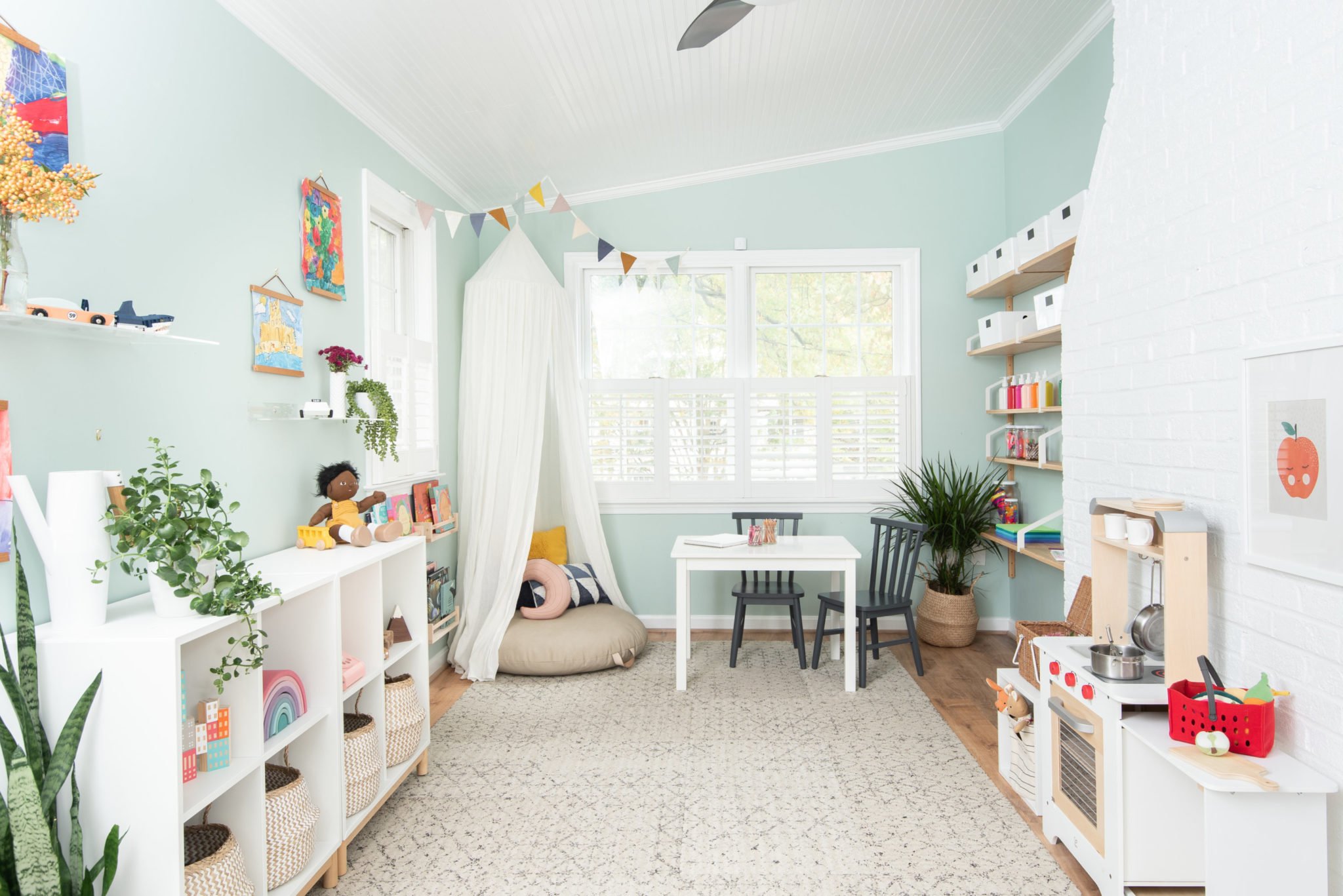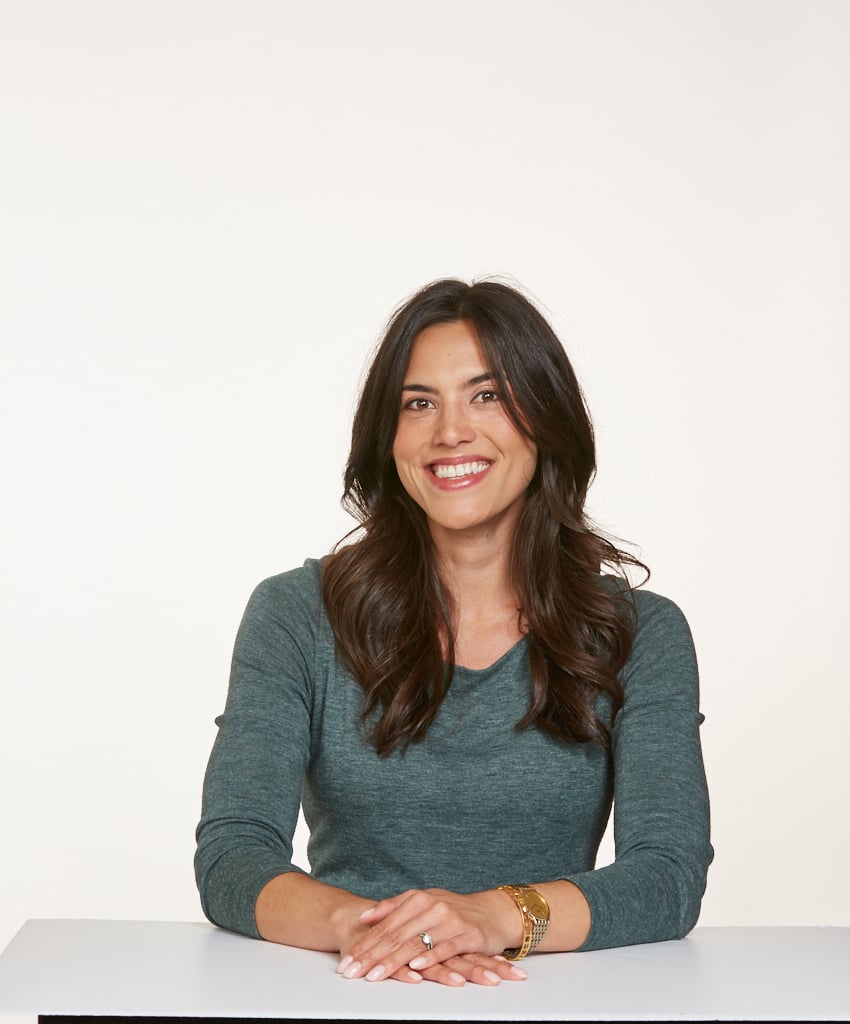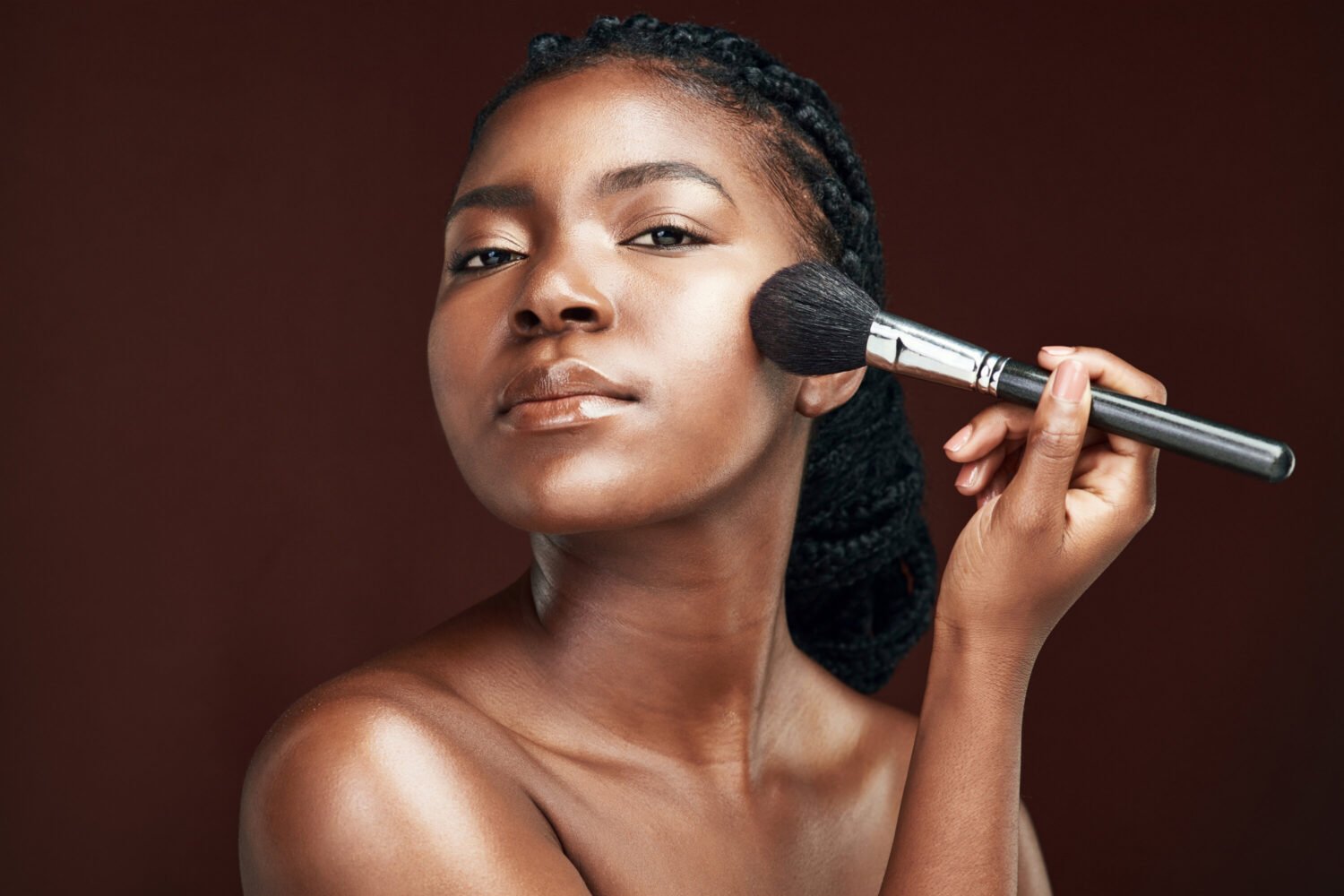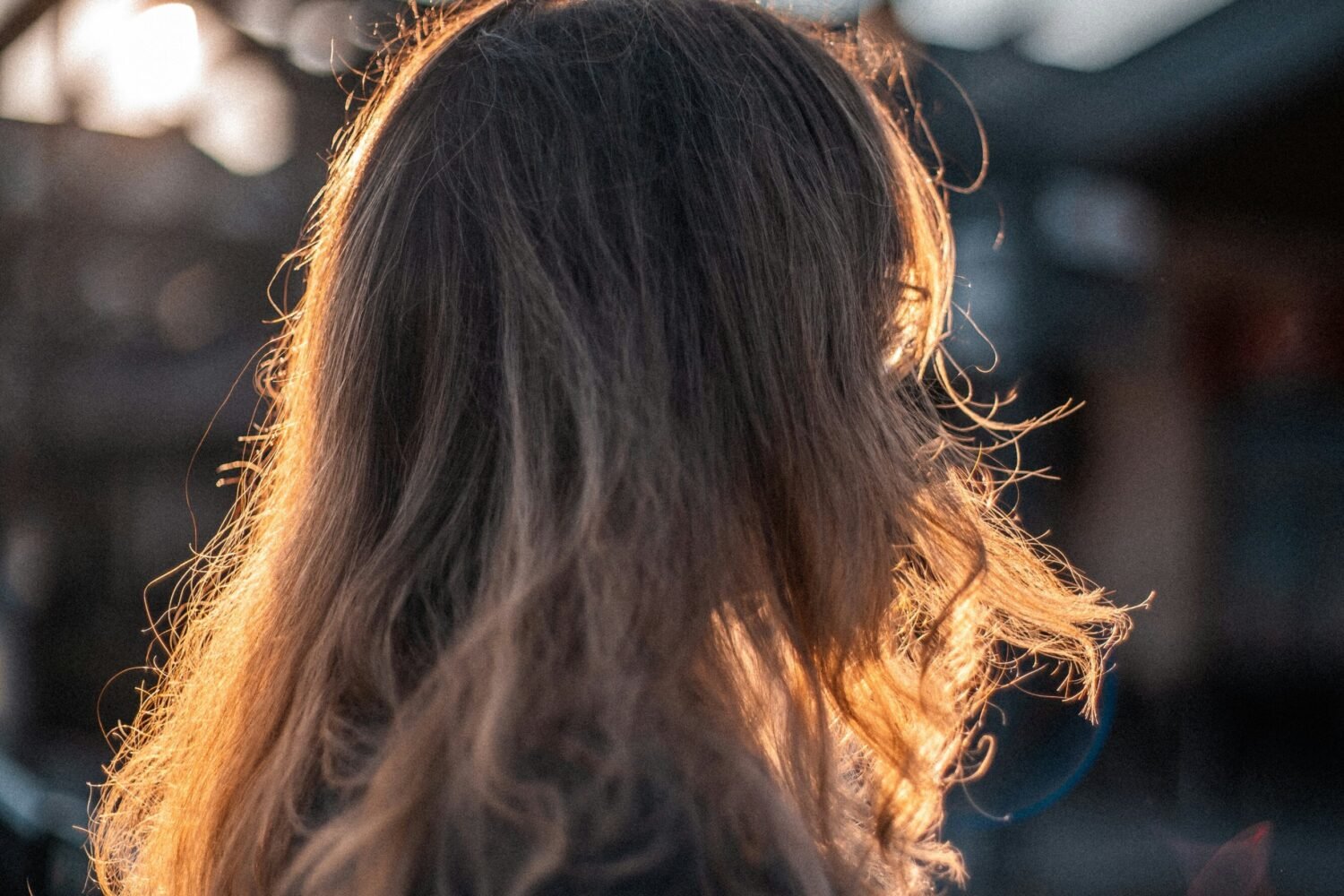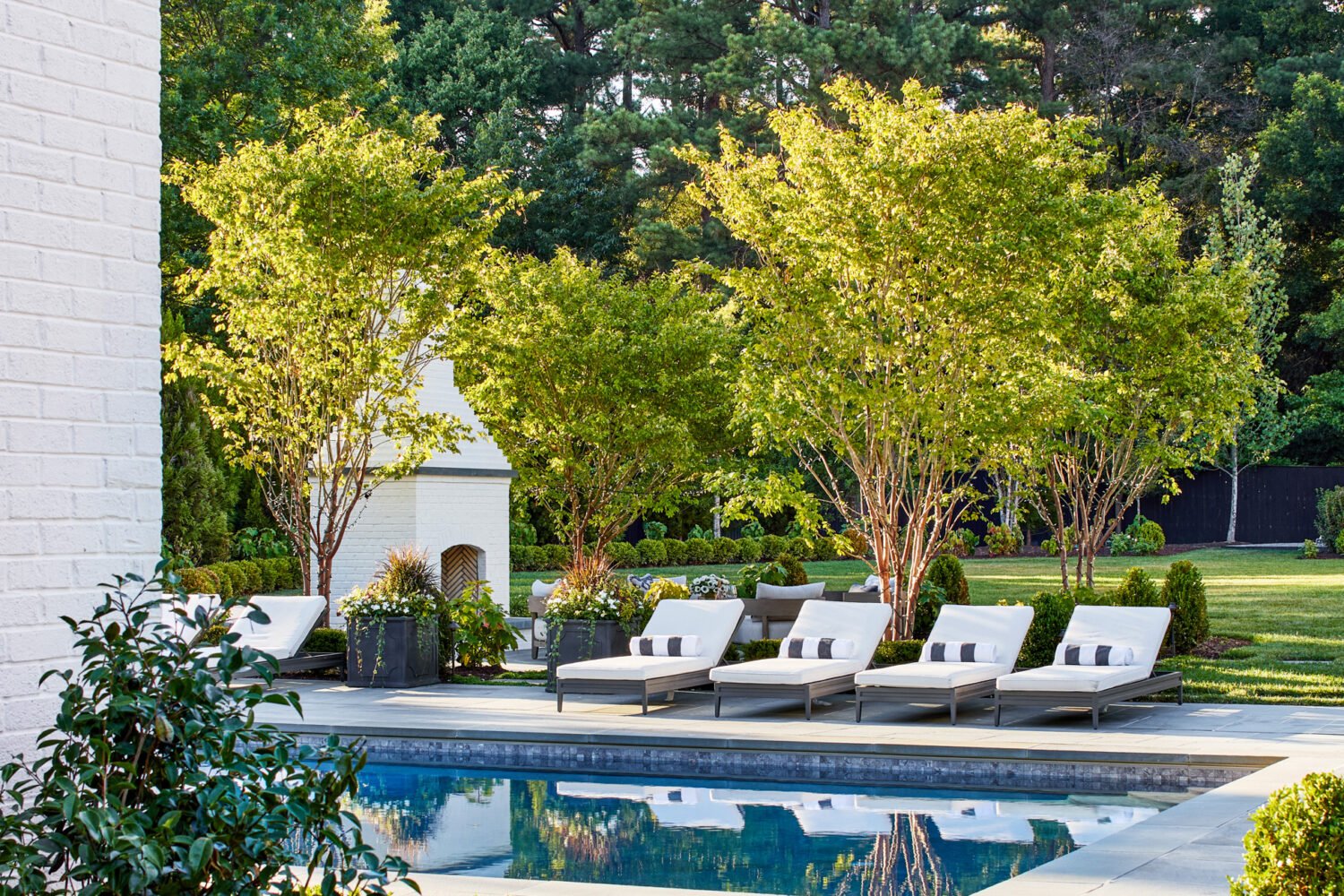 Former DC teachers Jodi Arellano and Anne Gillyard know a thing or two about how well-organized spaces promote better child development. “There’s so much research about how clutter affects the mind. That goes for both adults and for children,” says Gillyard, who started grOH! Playrooms with Arellano in 2017. “[Kids] might say they’re bored . . . and it really just means they can’t navigate their environment.”
Former DC teachers Jodi Arellano and Anne Gillyard know a thing or two about how well-organized spaces promote better child development. “There’s so much research about how clutter affects the mind. That goes for both adults and for children,” says Gillyard, who started grOH! Playrooms with Arellano in 2017. “[Kids] might say they’re bored . . . and it really just means they can’t navigate their environment.”
Arellano and Gillyard help families weed out and donate unwanted toys. Then they establish a “toy rotation” schedule for remaining items so everything isn’t piling up in the room at once. Kids have an easier time playing, they say, when the options aren’t overwhelming. Plus, thanks to being swapped in and out, toys tend to feel new again. Finally, they put the playrooms back together in a way that’s logical for the children who use them—for instance, by installing bookshelves that display covers facing forward, making them more attractive for little hands to grab. Or, for toddlers working on motor skills, by placing desirable items in locations that encourage movement. The rooms have to look good, too, they say. Otherwise, the grown-ups won’t want to hang out there.
In Barnaby Woods
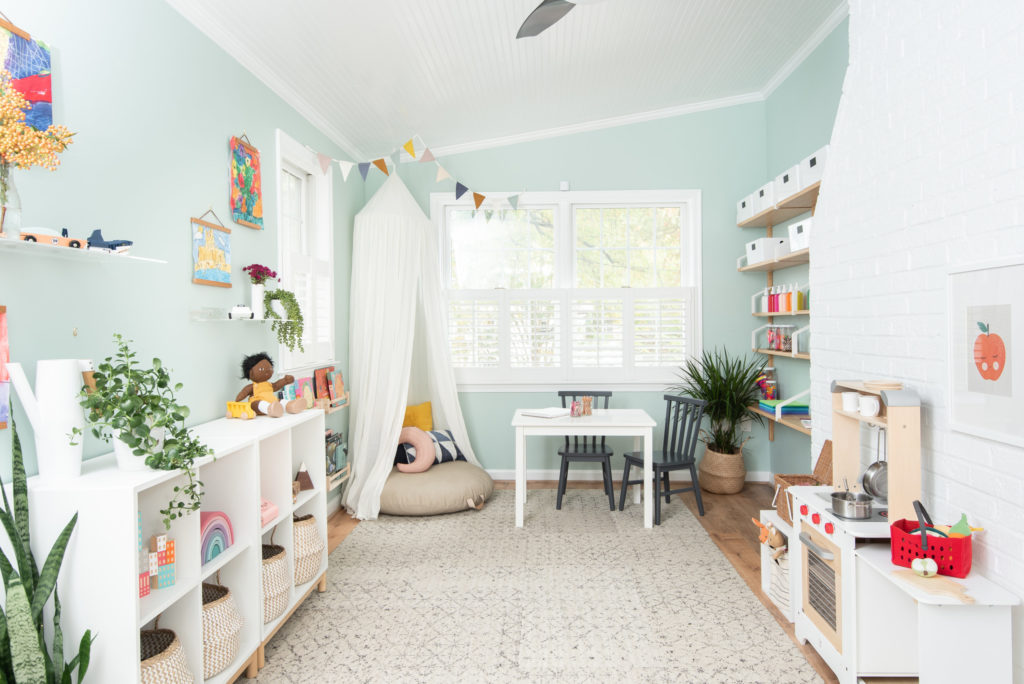
A sunroom, transformed for a ten-month-old and his five-year-old brother, was designed to encourage the younger boy to start crawling. (He did!)
In Petworth
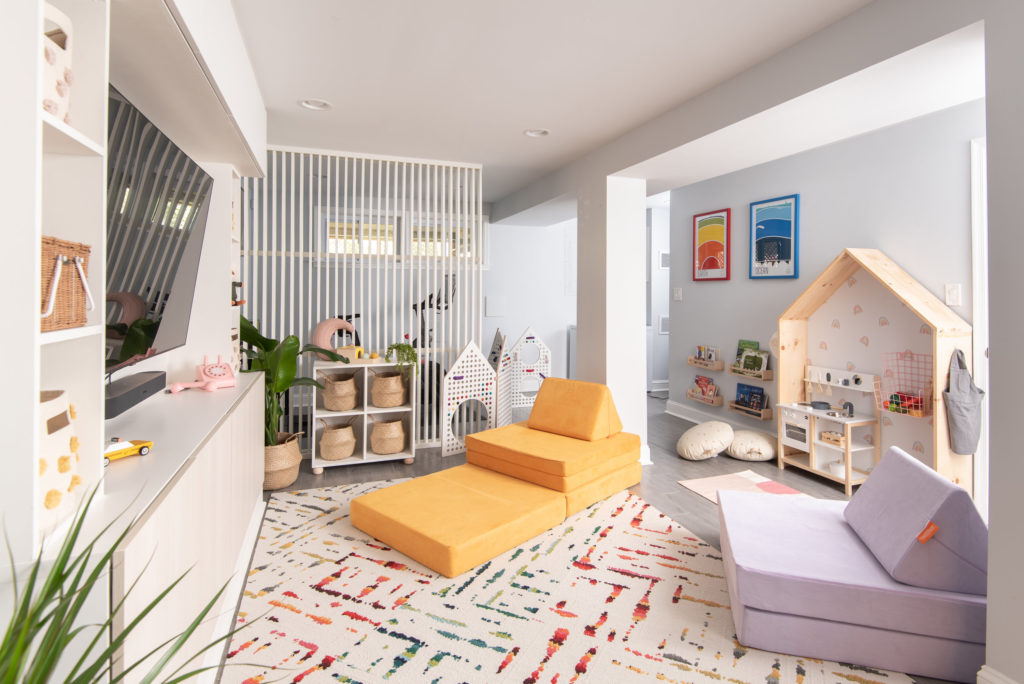
An unwelcoming basement became a bright space for a baby boy to grow into (plus a place for his parents’ Peloton, behind the slatted divider).
In Chevy Chase
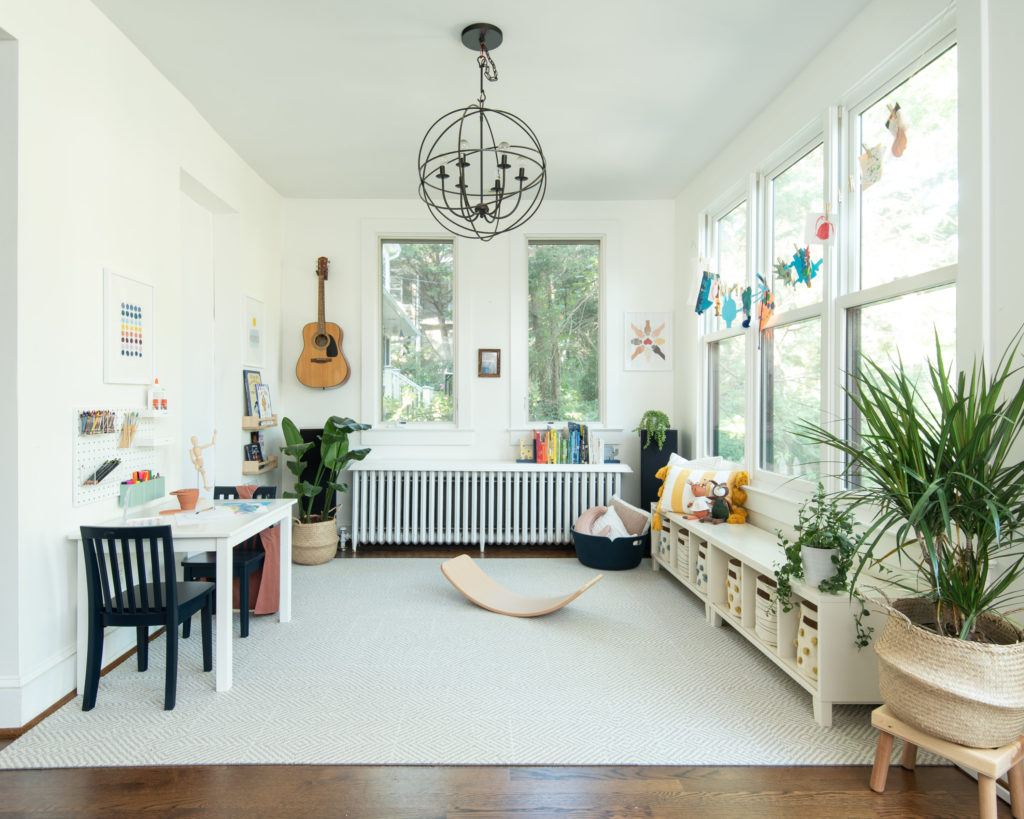
Arellano and Gillyard catered to this family’s love of arts and crafts. They kept the decor a bit more subdued because the playroom is just off the kitchen and living room.
This initially appeared in the January, 2021 issue of Washingtonian.

